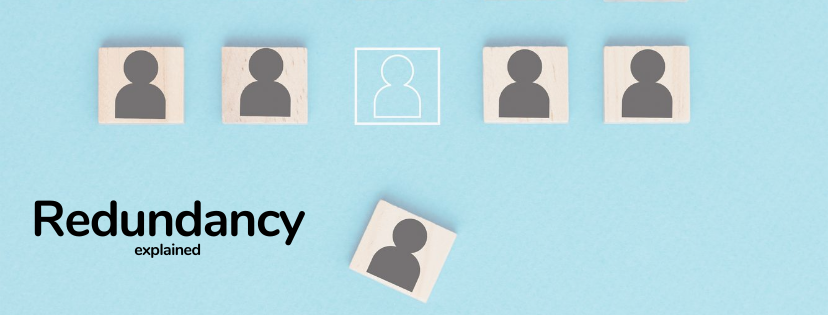If a Company Goes Bust Who Pays Redundancy? Lawful Insights for UK Worker
If a Company Goes Bust Who Pays Redundancy? Lawful Insights for UK Worker
Blog Article
Examining the Interplay Between Company Redundancy and Business Flexibility for Future Growth
In the vibrant landscape these days's service world, the complex relationship between company redundancy and business versatility becomes an essential variable for continual development and success. Companies typically encounter the obstacle of striking a delicate balance in between keeping a degree of redundancy to mitigate dangers and promoting adaptability to respond quickly to the ever-evolving market demands. This fragile interaction holds the vital to not only making it through in unstable times but also prospering when faced with unpredictability. As we discover the multifaceted dimensions of this interplay, interesting insights into just how organizations browse these complexities to pave the means for future development await.
Value of Company Redundancy
Company redundancy is a critical component that enhances business strength and reduces functional dangers. By integrating redundancy procedures within the business framework, business can better stand up to unpredicted disruptions and fluctuations in the service environment. Redundancy offers as a strategic buffer, permitting companies to adapt and respond successfully to unexpected challenges without compromising crucial procedures.
One key element of the value of company redundancy is its role in guaranteeing connection during times of situation. When faced with unexpected modifications or emergency situations, repetitive systems, sources, or employees can tip in to keep critical functions and stop widespread disturbances. This continuity not just safeguards the business's track record and client count on yet also decreases economic losses and functional downtime.

Approaches for Organizational Flexibility

Producing adaptable business structures that enable for fast changes to market characteristics and consumer demands is vital for staying affordable in a rapidly progressing atmosphere. By proactively determining potential interruptions and chances, companies can proactively adjust and grow in an ever-changing business landscape.
Harmonizing Redundancy and Versatility
Achieving a harmonious balance in between operational redundancy and business adaptability is paramount in navigating the complexities of a vibrant organization setting. Striking the ideal equilibrium between redundancy and adaptability is a fragile procedure that calls for a deep understanding of the company's goals, industry dynamics, and danger resistance.
To attain this equilibrium, companies require to perform regular analyses of their procedures to identify locations where redundancy is essential for risk mitigation and where versatility can drive technology and development. Carrying out flexible structures, cultivating a society of continual learning and improvement, and urging open communication throughout all levels of the organization are key strategies to balance redundancy and adaptability efficiently. By straightening these two vital components, firms can position themselves for lasting development and success in an ever-changing organization landscape.
Study on Adaptation Success
In checking out instances of successful organizational adjustment, it becomes obvious that the interplay between functional redundancy and adaptability is a specifying aspect in forming resilient organizations. One compelling case study is that of Netflix. Initially a DVD rental solution, Netflix showed remarkable adaptability by transitioning into a streaming platform when digitalization interrupted the industry. By tactically purchasing innovation and web content development, Netflix not only survived however prospered in a rapidly evolving Recommended Site market. An additional standout instance is Amazon. Beginning as an online book shop, Amazon continually adapted its business design, expanding into varied fields such as cloud computer and man-made intelligence. This versatility enabled Amazon to remain ahead of rivals and meet changing consumer needs. Lastly, Adobe gives a notable image of successful adaptation. The firm shifted from marketing software licenses to a subscription-based design, making certain recurring profits streams and enhanced customer involvement. These situation research studies underscore the value of functional redundancy combined with business versatility in cultivating long-lasting development and competitiveness.
Structure Strength for Future Growth
Structure resilience for future development calls for a calculated positioning of functional processes with market dynamics and emerging fads. Companies need to adapt to transforming atmospheres by fostering a society of versatility, technology, and continuous enhancement. Strength includes not just getting better from obstacles yet also proactively preparing for future obstacles. One crucial facet of structure resilience is buying durable threat management strategies to reduce potential disturbances. This includes situation preparation, diversifying go to the website supply chains, and creating backup plans for numerous contingencies (who pays redundancy money).
Moreover, promoting strong relationships with stakeholders, such as clients, employees, providers, and the area, is important for preserving and weathering unpredictabilities depend on and assistance throughout rough times. Effective interaction and transparency play a crucial function in structure resilience, as they aid promote and straighten assumptions cooperation in navigating uncertainties.
In addition, organizations require to prioritize discovering and development efforts to upskill staff members and outfit them with the needed devices to adjust to altering circumstances. By purchasing their workforce, companies can enhance their versatility and dexterity, eventually strengthening their resilience for sustainable future growth.
Conclusion

In the vibrant landscape of today's service globe, the detailed relationship between firm redundancy and organizational versatility arises as a vital factor for continual growth and success. Firms usually encounter the challenge of striking a delicate equilibrium in between keeping a level of redundancy to mitigate threats and cultivating versatility to react promptly to the ever-evolving market demands.To accomplish this balance, business require to conduct routine assessments of their procedures to determine locations where redundancy is required for risk mitigation and where versatility can drive advancement and growth.In verdict, the interplay between business redundancy and organizational versatility is important for future development. Structure resilience through a combination of redundancy and adaptability will make sure that firms are prepared for the difficulties of the future.
Report this page